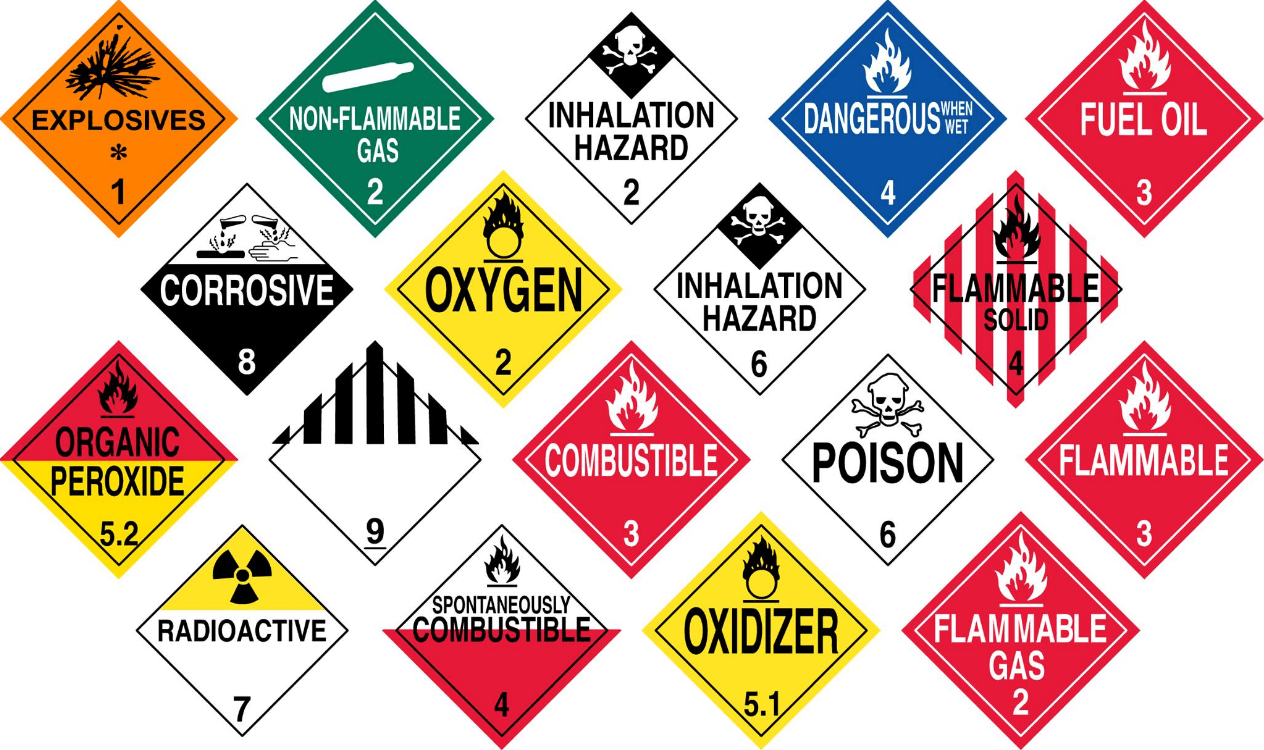Last year there were about 3,500 hazardous materials (hazmat) ground transportation incidents, records show. More than 3,100 of these incidents happened during highway transportation, according to the U.S. Department of Transportation Pipeline and Hazardous Materials Safety Administration (PHMSA) Office of Hazardous Material Safety.
Anyone whose job entails offering or transporting hazardous materials by ground, as well as by air and by sea, is required to comply with all aspects of the regulations and do everything in her or his power to prevent any such incidents during normal conditions of transport.
For this reason, Title 49 of the Code of Federal Regulations (49 CFR) requires hazardous materials shippers to undergo training. While this short article is no substitute for that, it will give some insights into the requirements for safety that hazmat employees must follow. Here is some basic advice on hazmat ground transportation.
Hazardous Materials Regulations
The most important advice for anyone working with hazardous materials to follow is to comply with the relevant regulations. The U.S. Department of Transportation’s (DOT) regulations on handling hazardous materials for commerce are found in Title 49 of the Code of Federal Regulations (49 CFR), specifically Parts 100 to 185. These are collectively known as the Hazardous Materials Regulations (HMR).
There are specific requirements for how every step of the process must be complied with, from classification, identification, packaging to marking and labeling as well as to the segregation requirements for storage and while loading a transport vehicle. It is imperative that anyone involved in the transport of hazardous materials know, understand and comply with them.
Enjoying our insights?
Subscribe to our newsletter to keep up with the latest industry trends and developments.
Stay InformedIt should be noted that the HMR covers all modes of shipping hazardous materials — not just by ground. This next section provides information specifically to hazmat ground transportation.
 Hazmat Ground Transportation – Preventing Rollovers
Hazmat Ground Transportation – Preventing Rollovers
If your job as a hazmat employee will involve loading or operating the truck that will transport the hazardous materials, you need to be aware that an accident involving this vehicle, due to its contents, could have much more serious consequences than with other vehicles not transporting hazardous materials. The Federal Motor Carrier Safety Administration (FMCSA) is keenly aware of this, which is why it provides additional training requirement for truck drivers to prevent rollovers.
According to the statistics, more than 94 percent of all rollovers share one common factor: a partial load. When a transport vehicle carries a partial load, the contents have more room to move. This can result in the shifting of the cargo if not properly secured.
If the driver takes a sharp turn, hits the brakes too hard, or suddenly changes the speed as he drives, the forces will act on the unsecured cargo and shift the weight around. This can, in turn, act on the transport vehicle and shift it further or in different ways than planned. Losing control like this can lead to rollovers and other accidents.
All this is to say that truck drivers need to be alert when they are behind the wheel. Before a driver embarks on the journey, all must be verified and the load must be secured. The driver must also be in a great state of mind and have passed all of the required medical and background checks.
The vehicle must also be in in good condition, particularly the brakes and tires. What drivers need most is to have complete control over the vehicle.
Hazmat Training
Anyone involved in the transport of hazardous materials – by ground or by other means – is required by law to know and comply with the appropriate regulations. Several federal and state agencies provide training in hazmat rules, including the Bureau of Dangerous Goods, which operates Hazmat University (www.hazmatuniversity.com) Training programs typically include programs for novices, recurrent training for those with more experience, and even training specifically for the segregation of hazardous materials.






















